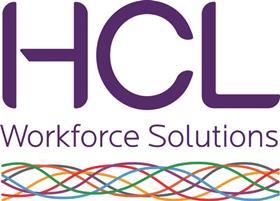Can we set the tone early in 2016 for the health service to tackle its workforce challenges, asks Claire Billenness

This is a sponsored comment from HCL Workforce Solutions
HSJ’s workforce investigation, in association with HCL, has been a valuable exercise and has generated debate. However, the health service never gets the luxury of a break and we cannot afford to sit back and reflect; we need to hit the ground running in 2016.
I read with great interest two major publications in December that are hugely relevant to the work of this commission – NHS England’s nine “must dos” contained within the Planning Guidance for 2016-17 – 2020-21, and Health Education England’s Commissioning and Investment Plan for England, which plans to deliver a much needed 80,000 additional NHS staff by 2020.
Steps in the right direction
This long term thinking is very positive, however, addressing the here and now is crucial in order for these plans to be fully realised. Indeed, the former will almost certainly be derailed unless we get the latter right. I want to use this article to reiterate two steps policymakers must take before the end of the first quarter of 2016.
1) The Home Office must retain nurses on the migration Shortage Occupation List (SOL) for a longer period – ideally three years – following the completion of the Migration Advisory Committee’s review in February
2) Monitor/Trust Development Authority must redesign the well-intentioned, but inappropriate, rules for agency spend and pay before the next ratchet down of the caps in February, as well as introducing an outright ban on the use of “unapproved/off framework” agencies across all staff groups
I am in no doubt the outcomes of the two policy decisions above will prove instrumental in determining how effectively challenges for the year are tackled and achieving the longer term ambitions of NHS England and Health Education England. Unless officials take action, NHS England’s targets, specifically to “return to aggregate financial balance” and “develop and implement a local plan to address the sustainability and quality of general practice, including workforce and workload issues”, will simply not be feasible.
There is rightly a continued focus on reducing excessive agency spend, but with the rules as they stand, I see no other result than widescale non-compliance by NHS providers and huge growth in off framework spend delivered by agencies refusing to take clinical governance seriously. It must not be forgotten agency spend has risen so steeply due to the underlying factor of a supply shortage.
The Home Office can help to resolve this through the SOL.
We certainly need decision makers to make the big calls in the early part of the year
Moreover, in addition to my two key calls, I consider there are numerous other “must-dos” that sit underneath NHS England’s core nine. Success will also be reliant on many factors, including a review of consultant job plans, effective rostering across all staff groups, including thoroughly embracing technology, and building vibrant in-house staff banks.
The potential is significant, but it will require sustained efforts from trusts to get it right.
As 2016 gets underway, I have fresh optimism this can be the year the NHS finally tackles its workforce challenges with all stakeholders working collaboratively towards the same goals: ensuring the system is financially secure, delivering quality care for patients, and crucially, providing an environment the NHS’s committed and capable staff deserve and can thrive in.
In my previous editorial, I wrote about the need for strong leadership and direction from the top. We certainly need decision makers to make the big calls in the early part of the year; I firmly believe this will set the tone for all stakeholders to do their bit.
Claire Billenness is managing director of HCL Workforce Solutions



























1 Readers' comment